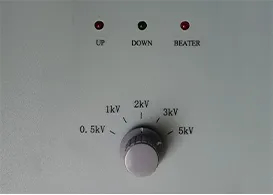 English
English



-
 Afrikaans
Afrikaans -
 Albanian
Albanian -
 Amharic
Amharic -
 Arabic
Arabic -
 Armenian
Armenian -
 Azerbaijani
Azerbaijani -
 Basque
Basque -
 Belarusian
Belarusian -
 Bengali
Bengali -
 Bosnian
Bosnian -
 Bulgarian
Bulgarian -
 Catalan
Catalan -
 Cebuano
Cebuano -
 China
China -
 China (Taiwan)
China (Taiwan) -
 Corsican
Corsican -
 Croatian
Croatian -
 Czech
Czech -
 Danish
Danish -
 Dutch
Dutch -
 English
English -
 Esperanto
Esperanto -
 Estonian
Estonian -
 Finnish
Finnish -
 French
French -
 Frisian
Frisian -
 Galician
Galician -
 Georgian
Georgian -
 German
German -
 Greek
Greek -
 Gujarati
Gujarati -
 Haitian Creole
Haitian Creole -
 hausa
hausa -
 hawaiian
hawaiian -
 Hebrew
Hebrew -
 Hindi
Hindi -
 Miao
Miao -
 Hungarian
Hungarian -
 Icelandic
Icelandic -
 igbo
igbo -
 Indonesian
Indonesian -
 irish
irish -
 Italian
Italian -
 Japanese
Japanese -
 Javanese
Javanese -
 Kannada
Kannada -
 kazakh
kazakh -
 Khmer
Khmer -
 Rwandese
Rwandese -
 Korean
Korean -
 Kurdish
Kurdish -
 Kyrgyz
Kyrgyz -
 Lao
Lao -
 Latin
Latin -
 Latvian
Latvian -
 Lithuanian
Lithuanian -
 Luxembourgish
Luxembourgish -
 Macedonian
Macedonian -
 Malgashi
Malgashi -
 Malay
Malay -
 Malayalam
Malayalam -
 Maltese
Maltese -
 Maori
Maori -
 Marathi
Marathi -
 Mongolian
Mongolian -
 Myanmar
Myanmar -
 Nepali
Nepali -
 Norwegian
Norwegian -
 Norwegian
Norwegian -
 Occitan
Occitan -
 Pashto
Pashto -
 Persian
Persian -
 Polish
Polish -
 Portuguese
Portuguese -
 Punjabi
Punjabi -
 Romanian
Romanian -
 Russian
Russian -
 Samoan
Samoan -
 Scottish Gaelic
Scottish Gaelic -
 Serbian
Serbian -
 Sesotho
Sesotho -
 Shona
Shona -
 Sindhi
Sindhi -
 Sinhala
Sinhala -
 Slovak
Slovak -
 Slovenian
Slovenian -
 Somali
Somali -
 Spanish
Spanish -
 Sundanese
Sundanese -
 Swahili
Swahili -
 Swedish
Swedish -
 Tagalog
Tagalog -
 Tajik
Tajik -
 Tamil
Tamil -
 Tatar
Tatar -
 Telugu
Telugu -
 Thai
Thai -
 Turkish
Turkish -
 Turkmen
Turkmen -
 Ukrainian
Ukrainian -
 Urdu
Urdu -
 Uighur
Uighur -
 Uzbek
Uzbek -
 Vietnamese
Vietnamese -
 Welsh
Welsh -
 Bantu
Bantu -
 Yiddish
Yiddish -
 Yoruba
Yoruba -
 Zulu
Zulu
multi column distillation plant
Multi-Column Distillation Plant A Comprehensive Overview
In the world of chemical engineering and industrial processes, distillation is one of the most vital separation techniques employed to purify and separate components in a mixture based on differences in their boiling points. Multi-column distillation plants represent a sophisticated evolution of this technique, optimizing efficiency, maximizing product purity, and addressing the complex demands of modern manufacturing.
What is Multi-Column Distillation?
The multi-column distillation process involves the use of several distillation columns connected in a series or parallel configuration. Each column is designed to handle specific temperature and pressure conditions, enabling the separation of complex mixtures that cannot be effectively distilled in a single column. This system enhances the overall separation efficiency by allowing for the gradual refinement of the mixture through multiple stages of vaporization and condensation.
Components of a Multi-Column Distillation Plant
1. Distillation Columns The heart of the plant, where the separation occurs. Each column is packed with trays or packing material to provide a large surface area for mass transfer between ascending vapor and descending liquid.
2. Heat Exchangers These components transfer heat within the system, typically used to preheat the feed or to condense overhead vapors. Efficient heat integration reduces energy consumption and enhances plant economics.
3. Pumps and Compressors Used to circulate liquids and vapors through the system, ensuring proper flow rates and maintaining requisite pressures.
4. Control Systems Advanced automated control systems monitor and manage temperature, pressure, and flow rates across the plant, ensuring optimal operating conditions and product quality.
multi column distillation plant

6. Condensers Located at the top of each column, condensers cool the vapor back into a liquid, allowing for collection and further treatment or storage.
Advantages of Multi-Column Distillation
1. Increased Efficiency By breaking down complex mixtures through multiple stages, multi-column systems can achieve higher separation efficiency, yielding purer products with fewer impurities.
2. Reduced Energy Consumption Through effective heat integration and energy recovery systems, these plants can significantly lower energy costs, making the operation more environmentally and economically sustainable.
3. Flexibility Multi-column distillation plants can be designed to handle a wide variety of feedstocks and product specifications, supplying versatility to meet diverse industrial needs.
4. Improved Control Over Product Quality With more stages of separation, operators can fine-tune the process to produce high-purity products tailored to specific application requirements.
Applications
Multi-column distillation plants serve a myriad of industries, including petrochemical, pharmaceuticals, food and beverage, and environmental sectors. For instance, in petrochemicals, they are essential for separating components of crude oil into valuable products such as gasoline, diesel, and jet fuel. In the pharmaceutical industry, they play a critical role in purifying solvents or active pharmaceutical ingredients, ensuring the safety and efficacy of medicines.
Conclusion
The multi-column distillation plant is an integral component of modern industrial manufacturing processes. By leveraging advanced technologies and sophisticated operational strategies, these plants facilitate the efficient separation of chemical mixtures, contributing to the overall productivity and sustainability of various industries. As technology continues to progress, the future of multi-column distillation will likely see even more innovations aimed at enhancing efficiency, reducing costs, and minimizing environmental impact, solidifying its role as a cornerstone of chemical processing.
-
Testing Equipment Industry Sees Major Advancements in 2025: Smart & Precision Technologies Lead the WayNewsJun.06,2025
-
Applications of Direct Current Generators in Renewable Energy SystemsNewsJun.05,2025
-
Hipot Tester Calibration and Accuracy GuidelinesNewsJun.05,2025
-
Digital Circuit Breaker Analyzer Features and BenefitsNewsJun.05,2025
-
Benefits of Real-Time Power Quality Monitoring Devices for Industrial EfficiencyNewsJun.05,2025
-
Earth Fault Loop Testing in High-Rise Building Electrical SystemsNewsJun.05,2025



